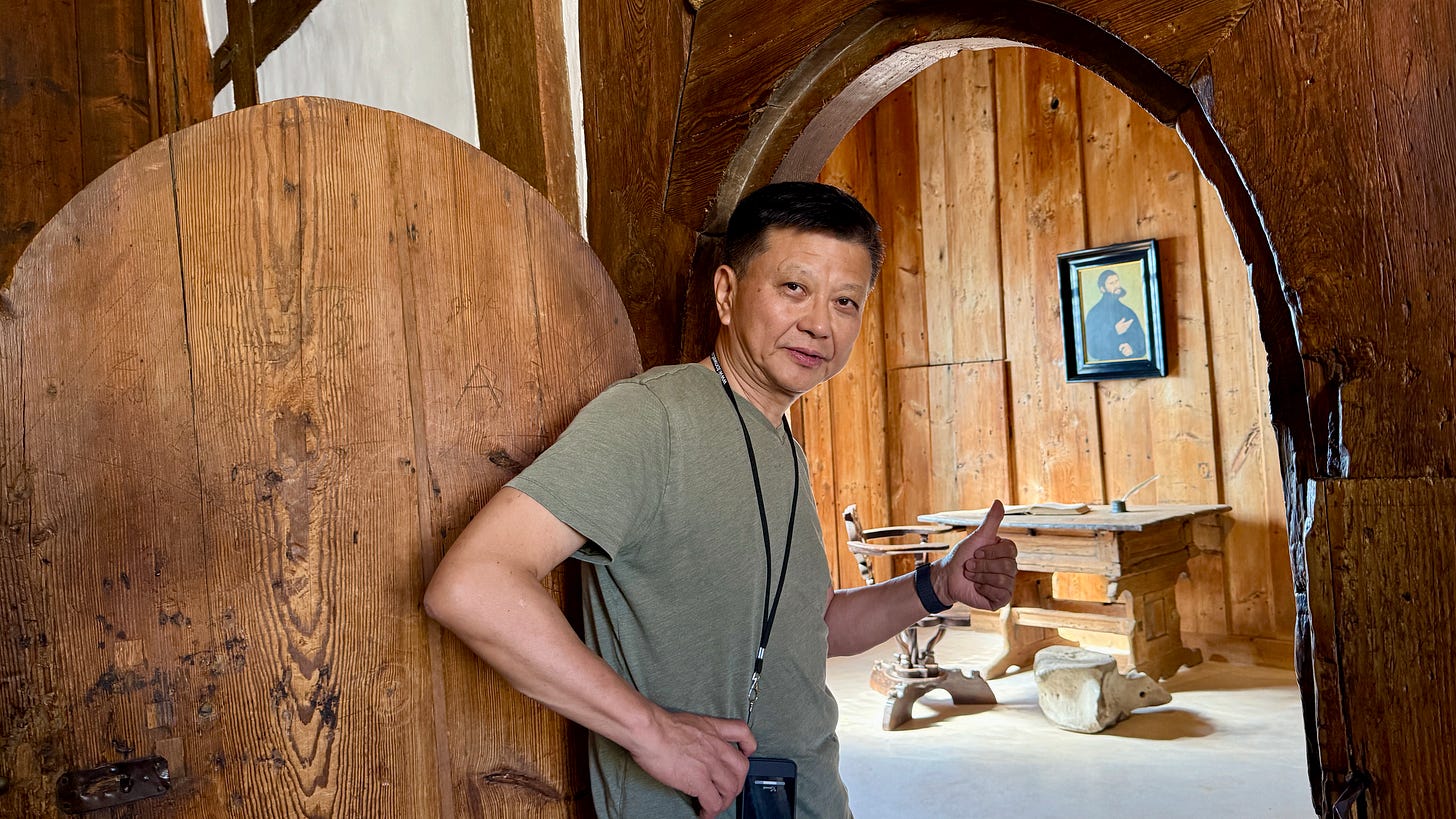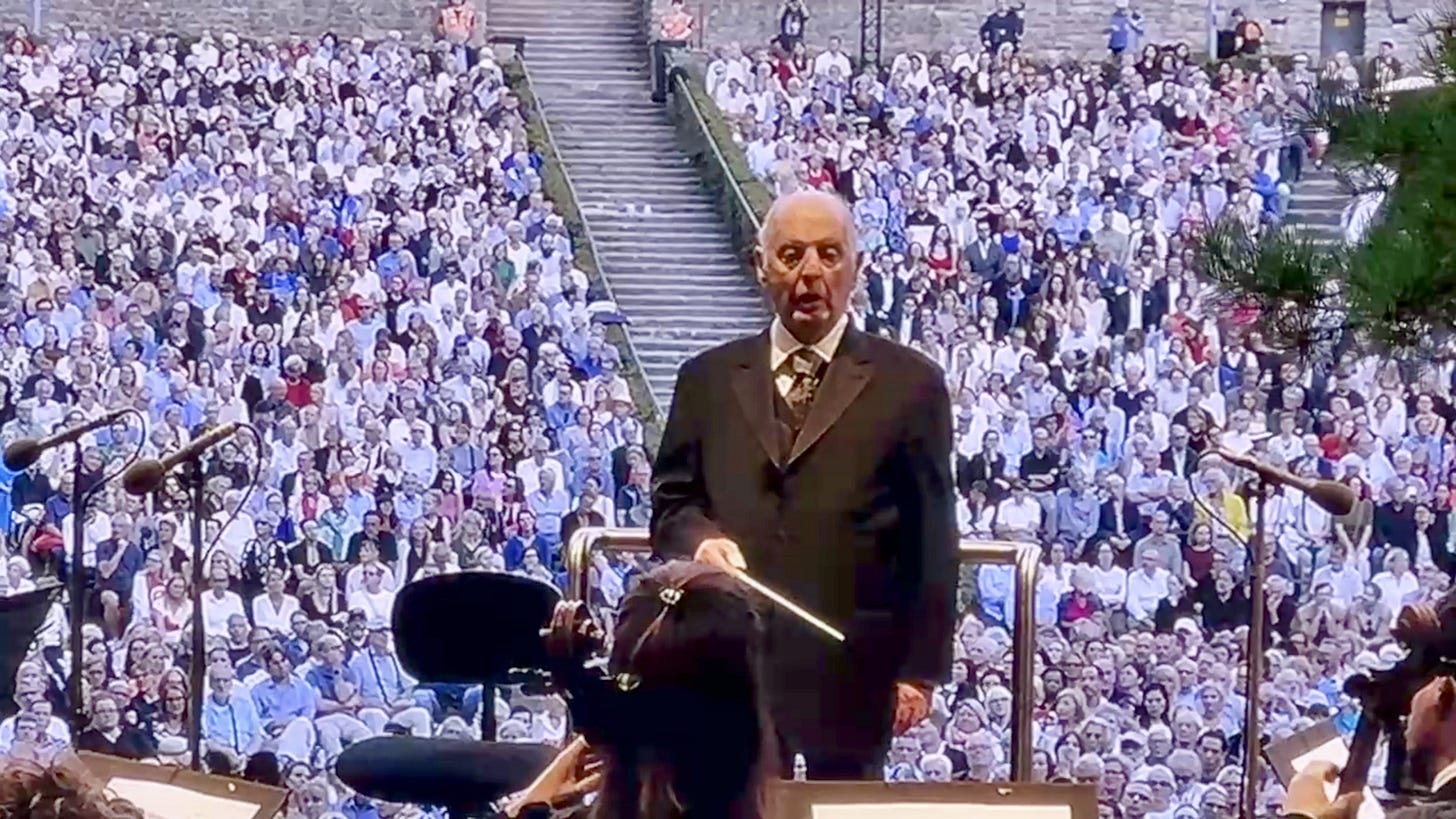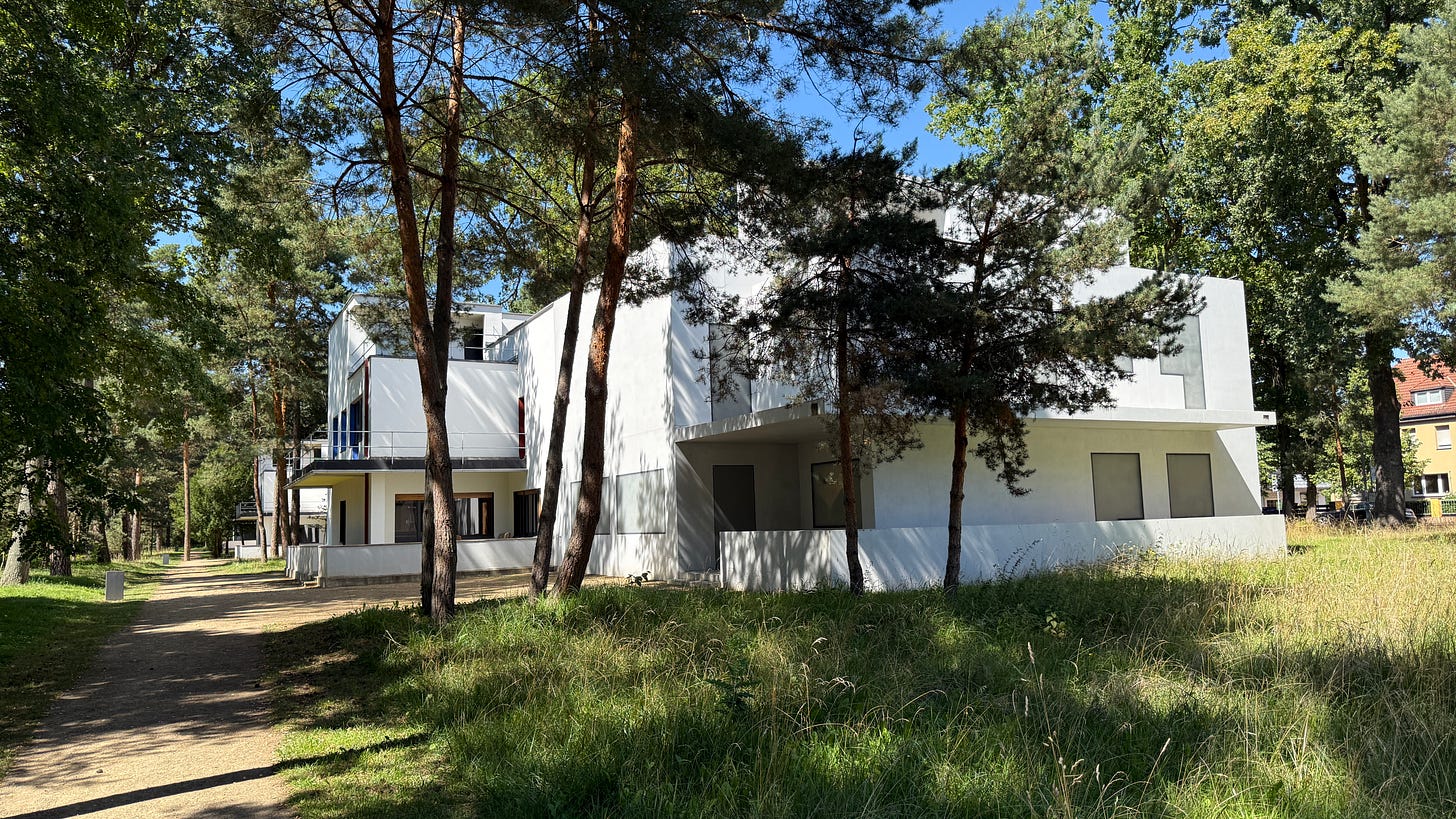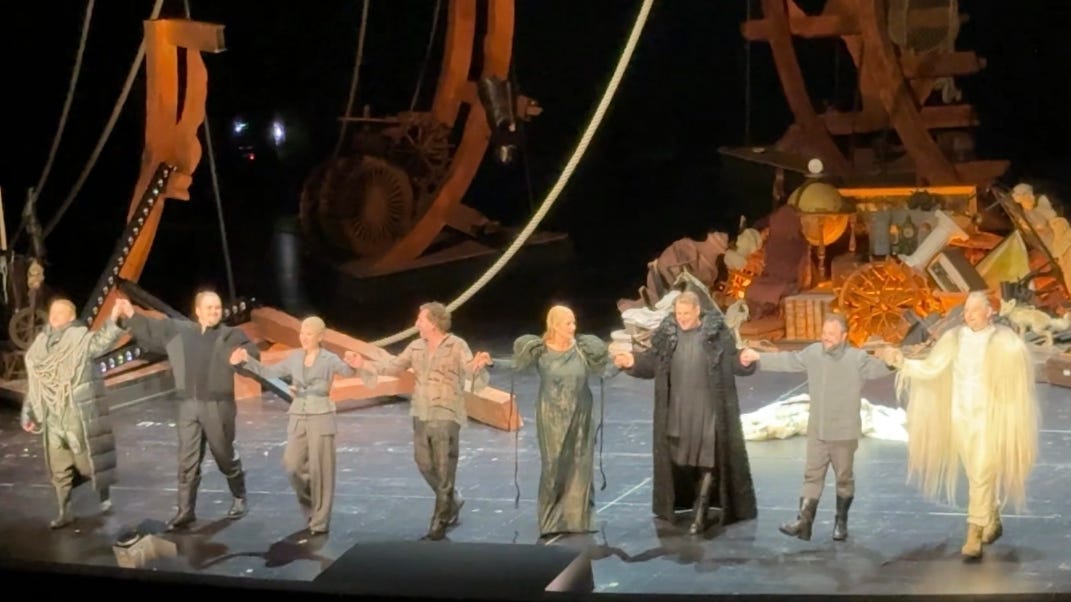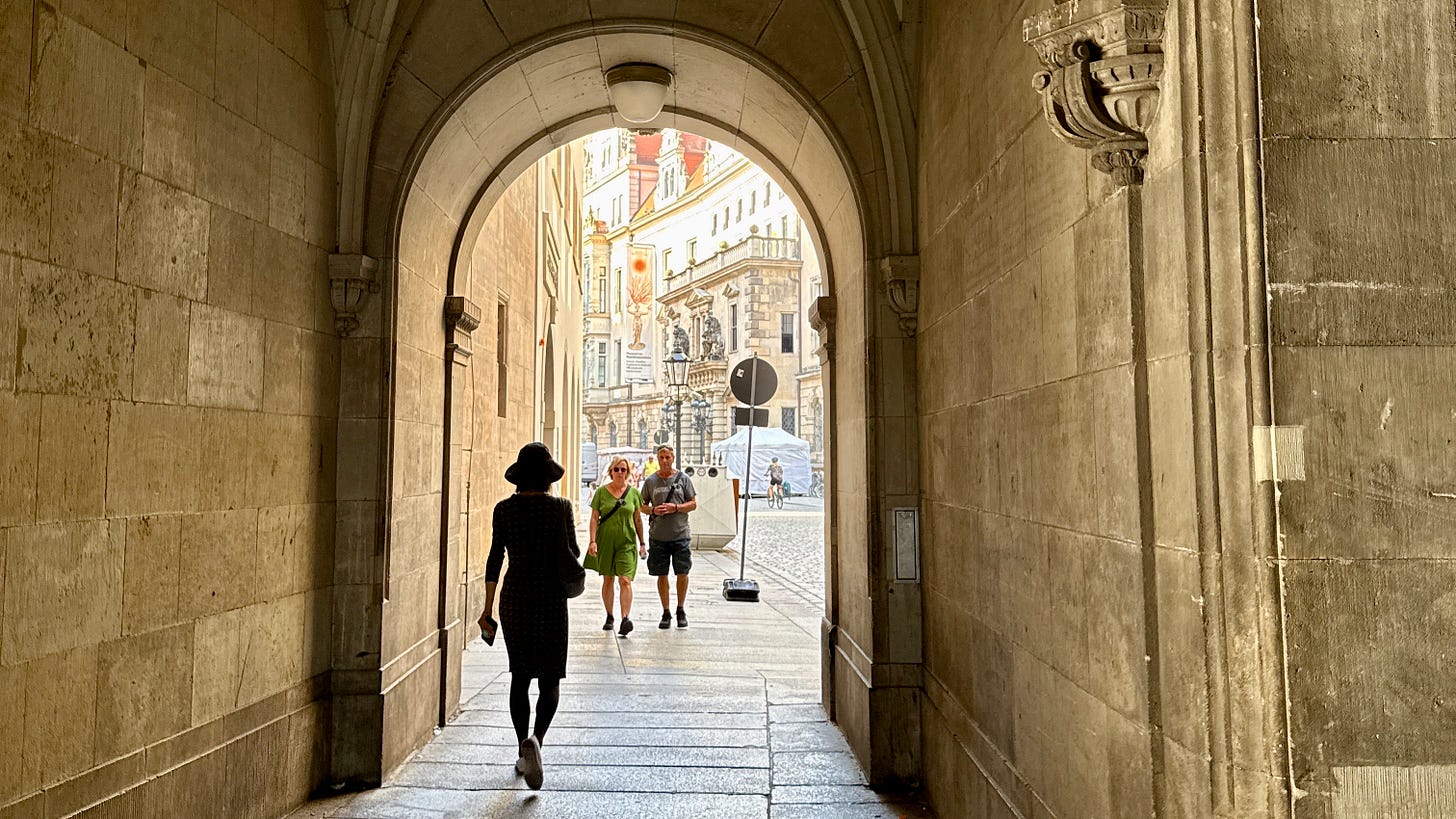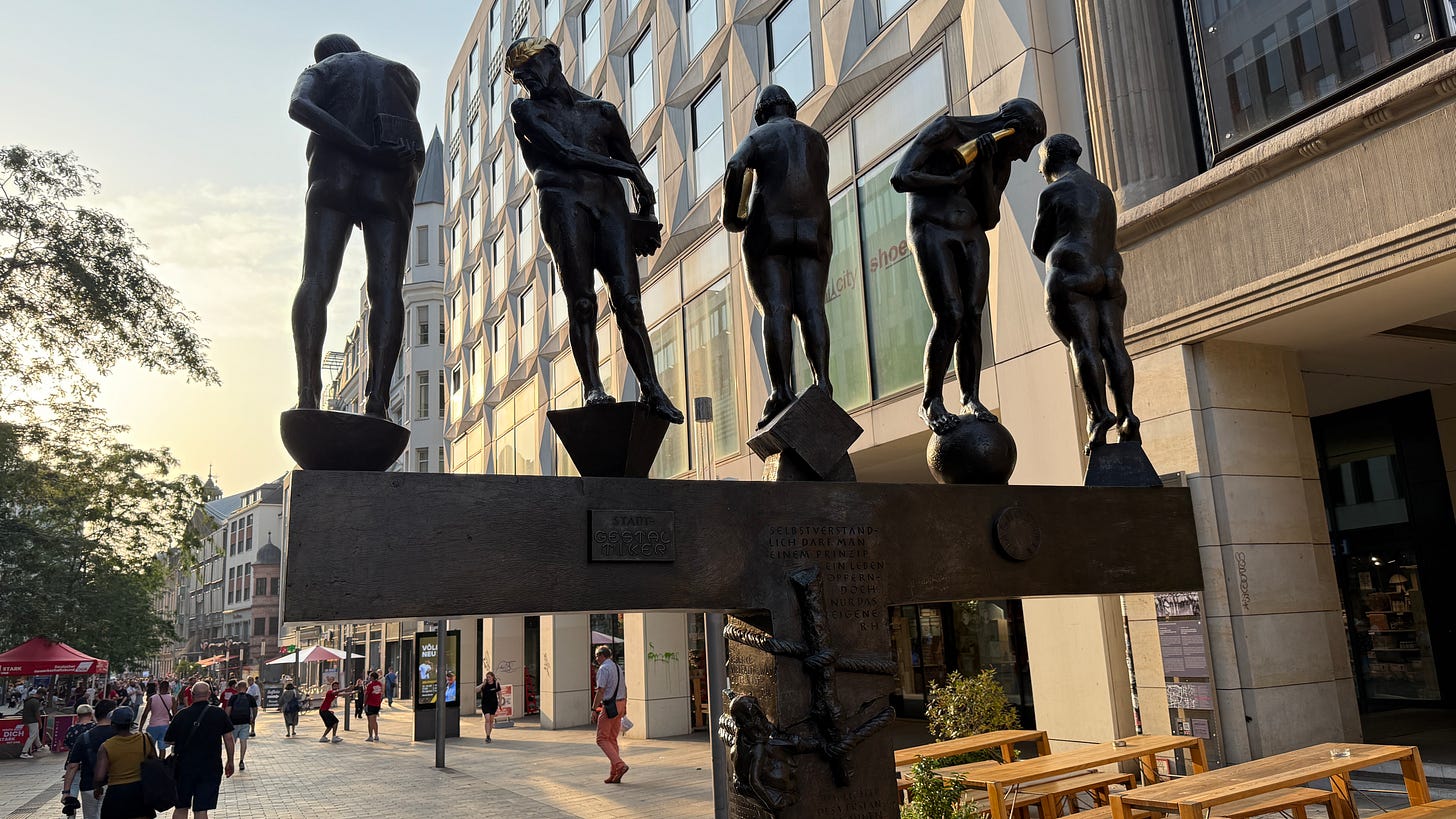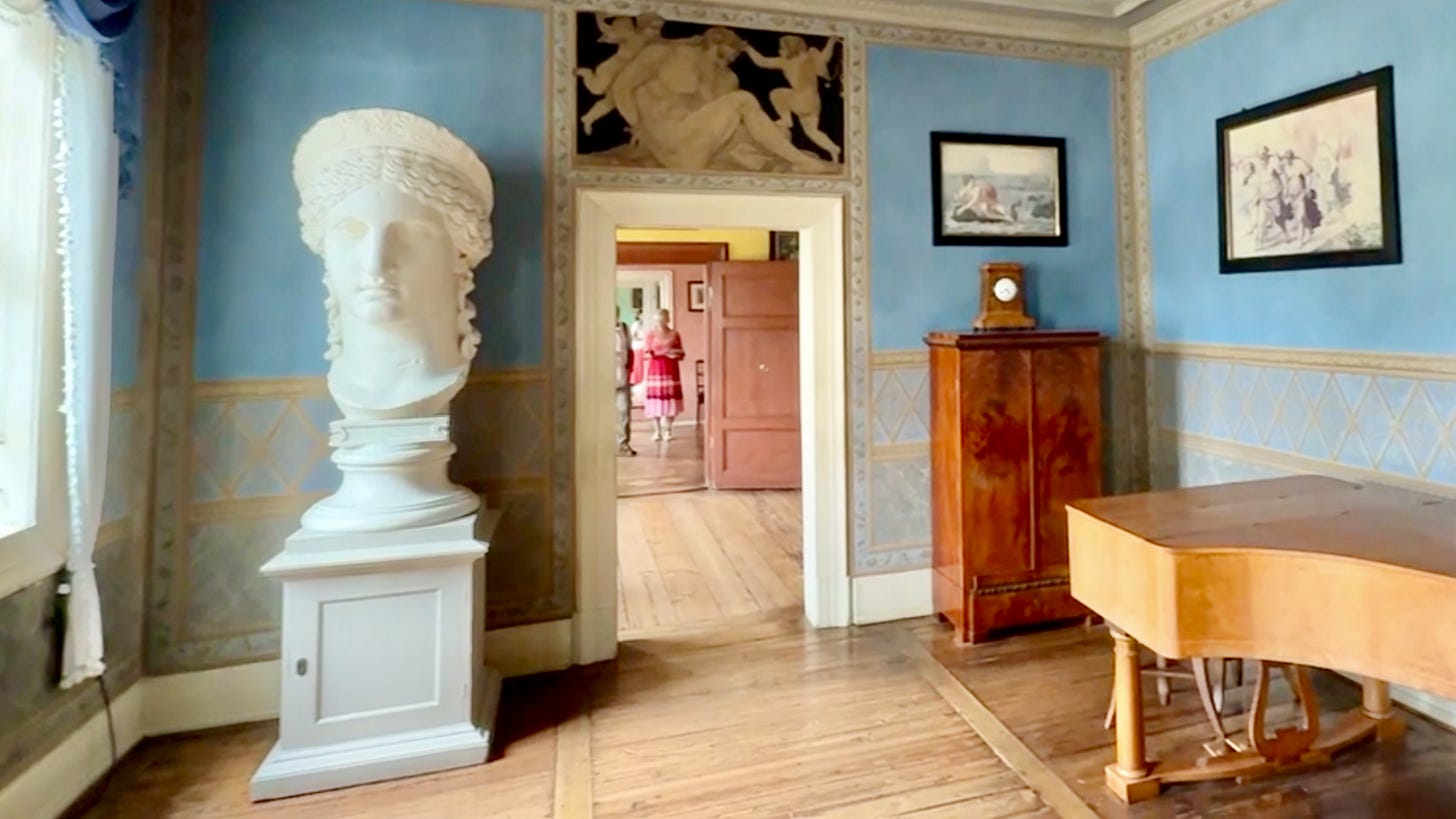Doors, Bridges, and Voices: Eight Days in the Heart of Germany
A (East) German Road Trip | August 9–16, 2025
Preface: Why Rewrite the First Eight Days
Last night, we spent a warm, laughter-filled evening with our friend Frank, sharing travel stories and experiences. It’s been weeks since we left Germany, and I thought the reflections I’d written during the trip were already enough.
But after our chat, something lingered in my mind.
Perhaps it was the sparkle in Frank’s eyes when we described the stones and bridges of Bastei; or the hush that filled the air when we talked about Barenboim’s trembling hands during the concert in the Waldbühne Berlin; or maybe, simply, I wanted to organize my thoughts one more time...
So over the weekend, I rewrote my notes of the first eight days of our journey — not as grand philosophical dialogue essay, but as a travel log of those eight days: with highlights, stories, and those flickers of thought in my heart. The tone still follows Koffeemocha: savoring slowly, sometimes boldly. I hope it brings my dear reader closer to the soul we felt in East Germany.
Before the Hanseatic winds brushed our faces in Lübeck and along the Baltic Sea, my wife and I embarked on an inward journey — into a country whose soul isn’t easily grasped from the surface.
East(ern) Germany is a mirror, a question, a conversation across time. I have tried to express my understanding of it.
This one is close to a natural language.
Day 1: Eisenach – The Risk of Obedience
Wartburg Castle was our first destination.
My wife took a photo of me standing in front of the door to the room where Martin Luther translated the Bible into German, alone, hunted, exiled, and yet fully immersed. No grand hall, just a room, a desk, a pen. He believed obedience to truth was more sacred than obedience to power.
Standing there — unable to go in, only stopping at the threshold — I could feel the tension between solitude and responsibility. It was not just a historic site, but a reminder:
Courage often begins in silence.
In the evening, we wandered Erfurt’s medieval streets. The red rooftops and stone alleys whispered of a life both distant and oddly familiar. I suddenly realized: though life back then was more fragile, it may not have been less rich.
Compared to modern life, they had less — but perhaps lived closer to the essence of life.
We certainly have “modernity” — speed and tools. But perhaps we are more distracted, less truly independent. Those thinkers, craftsmen, monks, and rebels of the past — they may have been the truly independent ones. The comfort I rely on might actually make solitude harder to attain.
As the sunset cast its glow on the Cathedral Square, I felt clearly:
The soul of Germany isn’t in museums or monuments, but behind that door — and in every quiet place where someone dares to listen to a higher voice.
Day 2: Erfurt ➞ Berlin – On Roads of Reflection
The road to Berlin felt like driving through different eras. As the plains unfurled outside the window, my sense of time changed.
We arrived not for politics, but for music — Lang Lang and the West-Eastern Divan Orchestra performing under the summer sky.
Daniel Barenboim, the founding conductor, walked to the podium with calm strength. In early 2025, he publicly announced he had Parkinson’s. Rather than step down, he chose to continue conducting, creating, and resisting.
His baton was not just musical — it expressed his deepest soul.
We had come for Lang Lang — his piano brilliant and powerful. But we were equally moved by Barenboim — those unsteady hands still raised music from silence. His body faded, but not his spirit.
In this once-divided country, the harmony was so grand.
Music holds more power than memory — it unites opposites: fragility and brilliance, loss and persistence.
Perhaps art is the true unifier.
Day 3: Berlin – The Wall Within Us
Berlin didn’t greet us with fireworks of unity, but with fragments — concrete, memory, meaning.
At the Berlin Wall Memorial on Bernauer Strasse, what touched me most weren’t symbols, but real stories; In the DDR Museum — tactile, immersive, disturbing — I opened the glove compartment of a Trabant car and pressed buttons that once controlled life.
It wasn’t nostalgia — it was confrontation.
But the deepest reflection came on water — we cruised along the Spree, passing Museum Island and going under bridges that once marked the city’s division.
Berlin, East and West — distinct, yet blurred on the river.
I realized: Berlin is not defined by “division”, but by “memory”.
Day 4: Dessau ➞ Bayreuth – Form as Moral Choice
In Dessau’s Bauhaus, I saw architecture that refused performance and only served purpose. When I studied at Tongji University, I then learned that Walter Gropius rejected ornamentation in favor of clarity. His philosophy can be summed up in the following question.
Are you building to attract attention, or to express intent?
Then we drove to Bayreuth — a town, heading to the southwest down, suggested by a German friend, Johannes, we met in New York. He said it’s a town worth seeing — we definitely agreed as we found something much deeper than scenery.
By chance or fate, we arrived during the Bayreuth Festival — the musical celebration Richard Wagner created for this very town. What was meant to be a quiet detour from East Germany became a rite of cultural passage.
During the festival, Bayreuth trembles. Opera lovers from around the world gather not only for music and opera — but for meaning of life and love. Wagner didn’t just compose — he created a myth so vast that even time bends around it.
If Gropius sought truth by simplifying, Wagner revealed truth through overwhelming excess.
As opera novices, we felt it even before the curtain rose — in the collective silence, in the reverence of those who return year after year.
If we see our friend open the door to his town, then I hope to open the gate to the world through writing and inspiring new generations.
Sharing vision — like musical notes passed in the symphony of life.
Day 5: Bayreuth – A World Worth Singing In
Our day began with a morning walk through Bayreuth’s old town, followed by a visit to Wagner’s home — Haus Wahnfried.
Inside this villa-turned-museum, the myth peeled away to reveal the man. The exhibits showed Wagner’s financial chaos — his life often lived beyond his means, but always fueled by belief in his vision.
But what truly changed the world was his artistic innovation: his dream of the Gesamtkunstwerk — a total work of art blending music, poetry, and theater. The museum didn’t just show his genius, but also the satire and criticism he received in his time.
We also saw Wagner’s brilliance in self-branding — not just as a composer, but as a cultural icon — an early pioneer in the commercialization of art.
Walking through Haus Wahnfried, I felt the weight of his legacy. Called “Peace in Delusion”, the house was full of contradictions: vision and debt, genius and arrogance, beauty and controversy.
In the afternoon, we climbed Green Hill, joining opera lovers from around the world. Tristan und Isolde unfolded like a slow revelation.
To witness Wagner’s myth — to walk through his home in the morning, and hear his music rise in the evening — was not just moving.
It was a jolt to the soul.
Day 6: Bastei Bridge ➞ Dresden – In Praise of Beauty
At noon, on the Bastei Bridge, we stood where Caspar David Friedrich once painted.
The cliffs above the Elbe needed no words or sketches. As Friedrich once said — he painted fog because it represents the soul, not the sword. In that moment, the silence beneath the cliffs helped me understand him.
Then we reached Dresden — once called “Florence on the Elbe,” but turned to ash in World War II bombings…
Yet what I saw was not ruin — but rebirth.
The Frauenkirche, Zwinger Palace, the whole Baroque skyline — they are not just architecture, but manifestations of beauty and determination. The Germans did not erase what was lost — they rebuilt it, stone by stone, using photos, memories, and sheer will to preserve beauty.
Standing before the restored dome and courtyards, I admired not only the buildings — but the spirit behind them.
A quiet form of resistance:
We will not let the past disappear —
we will carry it into the future.
And as Germany faces the future — energy transitions, sustainability, challenges ahead — I hope that same determination guides them. The power to rebuild must also become the power to reimagine — just as each stone laid, so too should policy be shaped: with vision, courage, and responsibility.
In Dresden, history was not erased — it was reborn.
That is the true German spirit.
Day 7: Leipzig – Resonance Over Recognition
Leipzig is both Bach and protest and freedom.
At St. Thomas Church, Bach’s gravestone echoed louder than applause. He wasn’t the popular choice in his time — but history eventually listened.
On Day 1, we had reached Eisenach too late to visit Bach’s childhood home on time. But on Day 7, we finally stepped into the church where he once played — and now rests.
That afternoon, we stood before his statue, gazing at the stone bearing his name. We didn’t bring much — just presence, quiet respect, and a few silent photos. Not to remember — but to honor.
I may never fully grasp Bach’s music. But in that moment, I understood something deeper:
Why this land has birthed so many great minds.
This soil contains a certain power — one that nourishes clarity, discipline, and transcendence.
I felt an echo — what links Luther, Bach, Goethe is not a technique, but a temperament.
They didn’t just create — they rooted themselves in something immovable, then reached out to the world from there.
Day 8: Weimar – Ideals That Don’t Age
In Weimar, we confronted history — by stepping into Goethe’s home, where he lived from 1782 until his death in 1832.
It’s not just a museum — it’s a preserved consciousness, a world built from thought, objects, and meticulous care.
At the entrance of his main salon, the floor bears the word: “Salve!” — Latin for “hello.” Inlaid into the wood, quietly welcoming each guest. We stepped inside — and in that moment, we weren’t visitors — but welcomed guests.
We walked through his study, his library, where even the air seemed to breathe ideas. Into his salon, where countless minds once met. Cabinets displayed Renaissance ceramics, medals, plaster casts — and in the “Juno Room,” a bust of Ludovisi’s Juno — what Goethe called his “first love” in Rome. It became the core of his aesthetic memory, reminding us:
Genius often begins with obsession.
Goethe’s pursuit of beauty wasn’t limited to art. He studied natural science, botany, mineralogy, even color theory. In the adjacent museum, we saw his vast collection of books, manuscripts, anatomical sketches. He didn’t just collect objects — but the full panorama of existence.
I realized: this wasn’t a man who wanted to be remembered — but one who longed to understand. Others chased progress — Goethe sought harmony.
Harmony between disciplines, between past and future, reason and wonder.
That evening, back in Leipzig, I sat alone, and reminded myself of,
Ideals never die — we just forget to visit them.
With gratitude in memory,
Kefei in New York City


